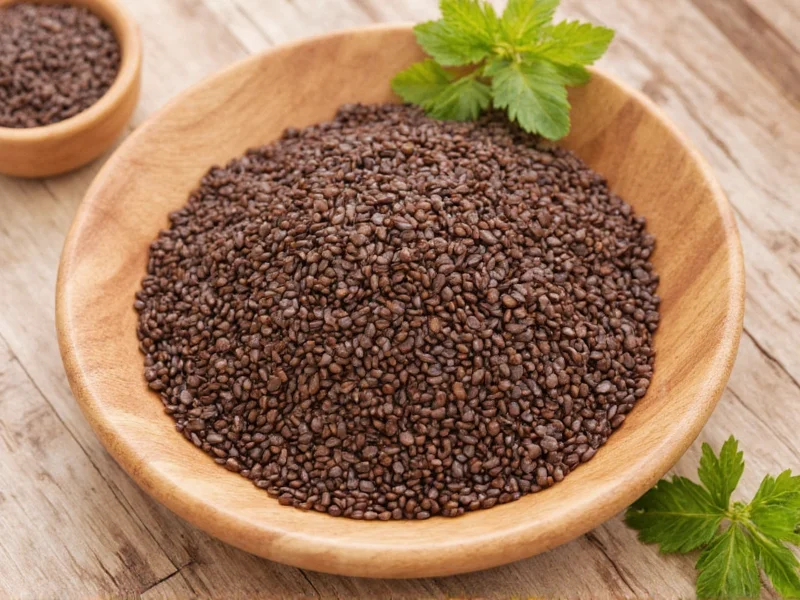When evaluating plant-based sources of dietary fiber, lentils consistently rank among the most nutrient-dense options available. Among the various lentil types cultivated worldwide, black lentils stand out for their exceptional fiber concentration. These small, jet-black legumes maintain their distinctive appearance even after cooking, resembling Beluga caviar—which explains their alternative name.
Understanding Fiber Content Across Lentil Varieties
Dietary fiber plays a crucial role in digestive health, blood sugar regulation, and cardiovascular wellness. Lentils serve as one of nature's most concentrated fiber sources, but significant variations exist between different varieties. Understanding these differences helps consumers make informed dietary choices based on specific nutritional goals.
| Lentil Variety | Fiber (per cooked cup) | Fiber (per 100g dry) | Protein (per cooked cup) |
|---|---|---|---|
| Black (Beluga) | 15.6g | 30.5g | 18g |
| French Green (Puy) | 15.2g | 29.8g | 17g |
| Brown | 15.0g | 28.9g | 17g |
| Red | 13.1g | 25.8g | 16g |
| Yellow | 11.6g | 24.3g | 15g |
Data sourced from USDA FoodData Central (2023) reveals that black lentils contain approximately 15.6 grams of dietary fiber per standard cooked cup serving. This represents 56% of the recommended daily fiber intake for adults following a 2,000-calorie diet. The fiber composition in black lentils consists of both soluble and insoluble varieties, providing comprehensive digestive benefits.
The Nutritional Advantage of High-Fiber Lentils
Black lentils' superior fiber content translates to significant health advantages. Their dense nutritional profile supports multiple physiological functions beyond basic digestion. The soluble fiber component forms a gel-like substance during digestion, which helps moderate glucose absorption and reduces cholesterol levels. Meanwhile, the insoluble fiber adds bulk to stool, promoting regular bowel movements and preventing constipation.
Research published in the American Journal of Clinical Nutrition demonstrates that regular consumption of high-fiber legumes like black lentils correlates with improved gut microbiome diversity. This microbial diversity serves as a foundation for robust immune function and reduced inflammation throughout the body. The prebiotic properties of lentil fiber specifically nourish beneficial gut bacteria, creating a positive feedback loop for digestive health.
Practical Applications for Maximum Fiber Benefit
Incorporating black lentils into your diet requires minimal culinary expertise but delivers substantial nutritional rewards. Unlike some high-fiber foods that cause digestive discomfort when introduced suddenly, lentils can be gradually integrated into meals with careful preparation techniques. Soaking dried lentils for several hours before cooking reduces phytic acid content and enhances nutrient absorption.
Chefs specializing in plant-based nutrition recommend these preparation methods to maximize fiber benefits from black lentils:
- Dry roasting before cooking enhances nutty flavor while preserving fiber integrity
- Cold salad applications maintain firm texture and prevent fiber breakdown from overcooking
- Combining with vitamin C-rich foods like tomatoes or citrus improves mineral absorption
- Gradual introduction into diet prevents digestive discomfort for those increasing fiber intake
For individuals tracking their dietary fiber intake, understanding the difference between dry and cooked measurements proves essential. While dry black lentils contain approximately 30.5 grams of fiber per 100 grams, cooking increases volume while maintaining the same fiber content. This explains why cooked measurements show lower concentration per unit weight but identical total fiber per serving.
Comparative Analysis with Other High-Fiber Foods
When evaluating black lentils against other fiber-rich foods, their nutritional density becomes particularly impressive. A single cup of cooked black lentils provides more fiber than two medium apples with skin, three cups of cooked broccoli, or one cup of cooked quinoa. This concentration makes them an efficient choice for individuals seeking to meet daily fiber requirements without excessive caloric intake.
Nutritionists often recommend black lentils as a superior alternative to refined carbohydrates in meal planning. Substituting lentils for white rice or pasta in recipes increases fiber content by 300-400% while providing additional protein and micronutrients. This substitution strategy proves particularly valuable for individuals managing diabetes or metabolic syndrome, where fiber plays a critical role in blood sugar regulation.
Addressing Common Misconceptions About Lentil Fiber
Several misconceptions persist regarding lentil fiber content and its effects. Some consumers believe that red or yellow lentils, which break down more completely during cooking, contain less fiber. However, the total fiber content remains similar across varieties—the difference lies primarily in texture and cooking behavior rather than nutritional composition.
Another common misunderstanding involves the relationship between lentil fiber and digestive comfort. While some people experience gas or bloating when increasing fiber intake, proper preparation methods significantly reduce these effects. Gradually introducing lentils into the diet while maintaining adequate hydration allows the digestive system to adapt without discomfort.











 浙公网安备
33010002000092号
浙公网安备
33010002000092号 浙B2-20120091-4
浙B2-20120091-4